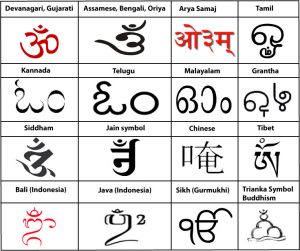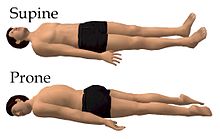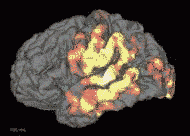Theresa Bui | Blogger | SQ Online (2016-17)
Oṃ. The sacred primordial sound and spiritual icon. Perhaps you’ve heard the sound or seen the Hindu symbol à¥. Perhaps, the “Oṃ. Om my god, if you’re wearing a dress, please keep your knees together. Nobody wants to see that. Om” scene in The Office: “Stress Relief”. Just like Michael Scott did, we shall implement meditation to resist our inevitable stressor as the second wave of midterms remains as relentless as ever.
History of Om
The gravity of Oṃ is often overlooked because it sounds frivolous. It is actually a mantra in Hinduism, Buddhism, Jainism, and Sikhism. The Oṃ iconography is included in many ancient manuscripts, temples, and monasteries across different religions. The sound is loosely defined as the supreme spirit, divine, and cosmic principle.
Oṃ has been used as a common meditation therapy in spiritual or shamanic traditions. Oṃ is a combination of the A, U, M phonetics, which can be found in any word. The sound itself is perceived as divine and ethereal as it supposedly heals the consciousness. You can find thousands upon thousands of derivations of Oṃ chanting videos on Youtube. The Oṃ chant is available on these popular channels: Meditative Mind, DhyaanGuru Dr. Nipun Aggarwal, and Meditation Relax Music. The chant can be done in many ways depending on religion and purpose; however, there is that distinct, elongated Oṃ that vibrates through the air. Is there a neuroscientific explanation as to why this sound is so sacred in many cultures?

The Effectiveness of Oṃ
There have been several studies that explore the Oṃ chanting. In scientific terms, it is referred to as mind sound resonance technique (MSRT). It is not an area that has been deeply explored, but there are two outstanding studies that I would like to highlight.
- The Immediate Effects of Mind Sound Resonance Technique on People with Anxiety Disorder

Vipin Dhansoia, Hemant Bhargav, and Kashinath Metri conducted a pilot study, which is a small scale preliminary study conducted to evaluate possible findings. The objective of the study was to measure the immediate effects of MSRT in a supine position. The sample size was 15 adults diagnosed with General Anxiety Disorder. Those assigned to treatment received a 30 minute session for two consecutive days. To compare the results with the baseline data, the test used State-Trait Anxiety Intervention (STAI), a 40 or 20 question predictor for state-anxiety; the Digit Letter Substitution Task (DLST), a psychomotor test sensitive to depression, dementia, and brain damage; and differences in normality scores. The results of the study suggest that MSRT can reduce anxiety and depression, but still need to be confirmed by a larger sample size.
- The Effects of the Repetitive Speech on the Human Cortex

The study explores the neuronal activity during repetitive speech in 23 subjects who do not regularlymeditate. The results were recorded using blood oxygenated level-dependent functional magnetic resonance imaging to compare results of repetitive speech to resting state. The study found that there is a widespread reduction in the large cortical regions, which includes the default network mode (DNM). The DMN is related to mental processes, such as autobiographical recall, future planning, and mind wandering.
Although Oṃ is a widely recognized sound in meditation and yoga, the underlying neurological mechanism is still unknown. Personally, the vibration does make me feel grounded and relaxed. I feel spiritual. I would recommend checking out the YouTube hyperlinks that I attached. Of course, it’s not Migos, Kehlani, or John Mayer, but it is worth a shot.
References:
- http://onlinelibrary.wiley.com/wol1/doi/10.1002/brb3.346/full
- https://www.ncbi.nlm.nih.gov/pmc/articles/PMC4278139/
- http://health.usnews.com/health-news/blogs/eat-run/2013/10/02/your-brain-on-om-the-science-of-mantra
- http://www.huffingtonpost.com/kripalu/meaning-of-om_b_4177447.html
